A man’s 16th century jerkin, in slashed and pinked leather, based on an extant example in the Museum of London.
Jerkins were a common upper garments of the Elizabethan man from the upper or middle classes, and were also adopted for use by women. Men’s jerkins were worn alone over a linen shirt, or as an extra layer over the doublet. Contemporary images show that they were frequently decorated with slashing or pinking and could be made either of cloth or of fine leather.
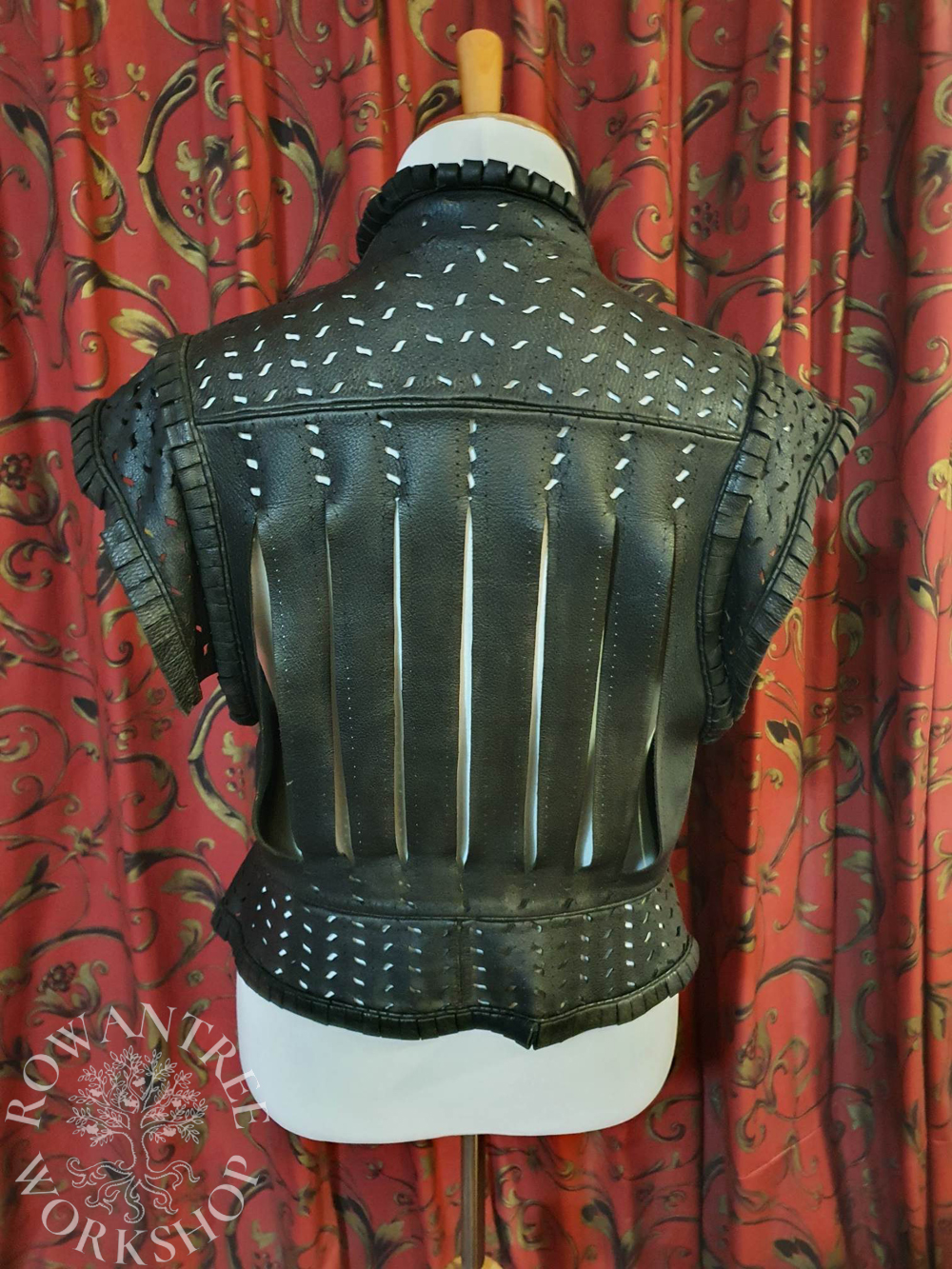
I made this one for my husband Nico, who wanted something that looked good but could be worn in hot weather, for both middle and upper class wear.
Research and Design
This garment is based on the youth’s leather jerkin held in the Museum of London collection, and detailed by Arnold in Patterns of Fashion 3 (1985, pp19, 68-69). I combined this with elements from the portrait of Sir Henry Lee and the woodcut of the Glasser from Jost Amman’s Book of Trades (1973).

Source: Museum of London
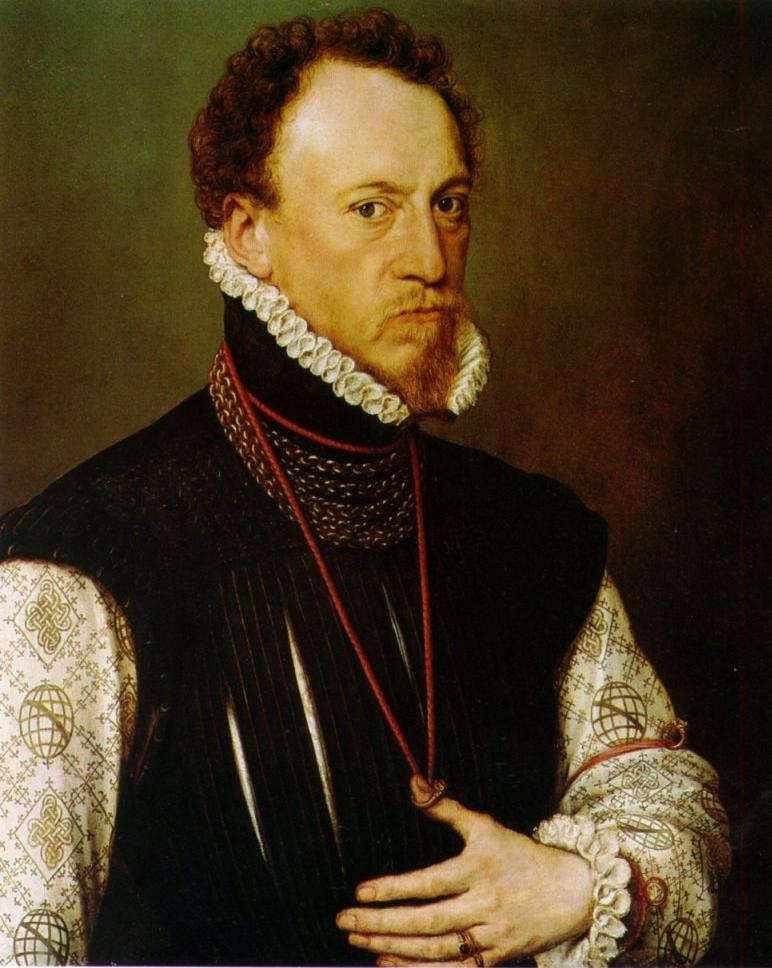
Source: National Portrait Gallery

Source: Wikimedia
The extant jerkin was made of dark brown leather, fastened with cone-shaped pewter buttons, and decorated with scoring, slashing and pinked with diamonds, hearts and stars. Sir Henry’s jerkin is black, with long slashes and the yoke with rows of diagonal slashes and fine holes, and slashed sleeve caps.
Sir Henry’s portrait shows the shirt through the slashes – it is clearly unlined. Arnold noted traces of silk stitching on the front of the extant jerkin, perhaps indicating a silk lining, but concluded this was probably added in the 1820s – the body of the jerkin would have been unlined. The skirts were lined in plain leather.
I decided to make the jerkin in black deerskin (the OED (Little et al 1973) notes ‘deerskin’ referring to garment leather from the Middle English). I just managed to get the entire jerkin out of one skin, but a mistake in the punching pattern on the back yoke meant I has to replace this with leather from a different skin.
Construction
First, the pattern. The extant jerkin is made with single piece front and back panels with one-piece wings and skirts. Sir Henry’s portrait also has with one-piece wings and skirts, but has a front and back yoke, which I preferred, along with the long slashes on the front and back.
The back of the extant jerkin is cut in one piece, including the back collar. I opted for a back yoke, cut gestalt with the back collar, as can be seen in many contemporary doublets and jerkins, including several examined by Arnold.
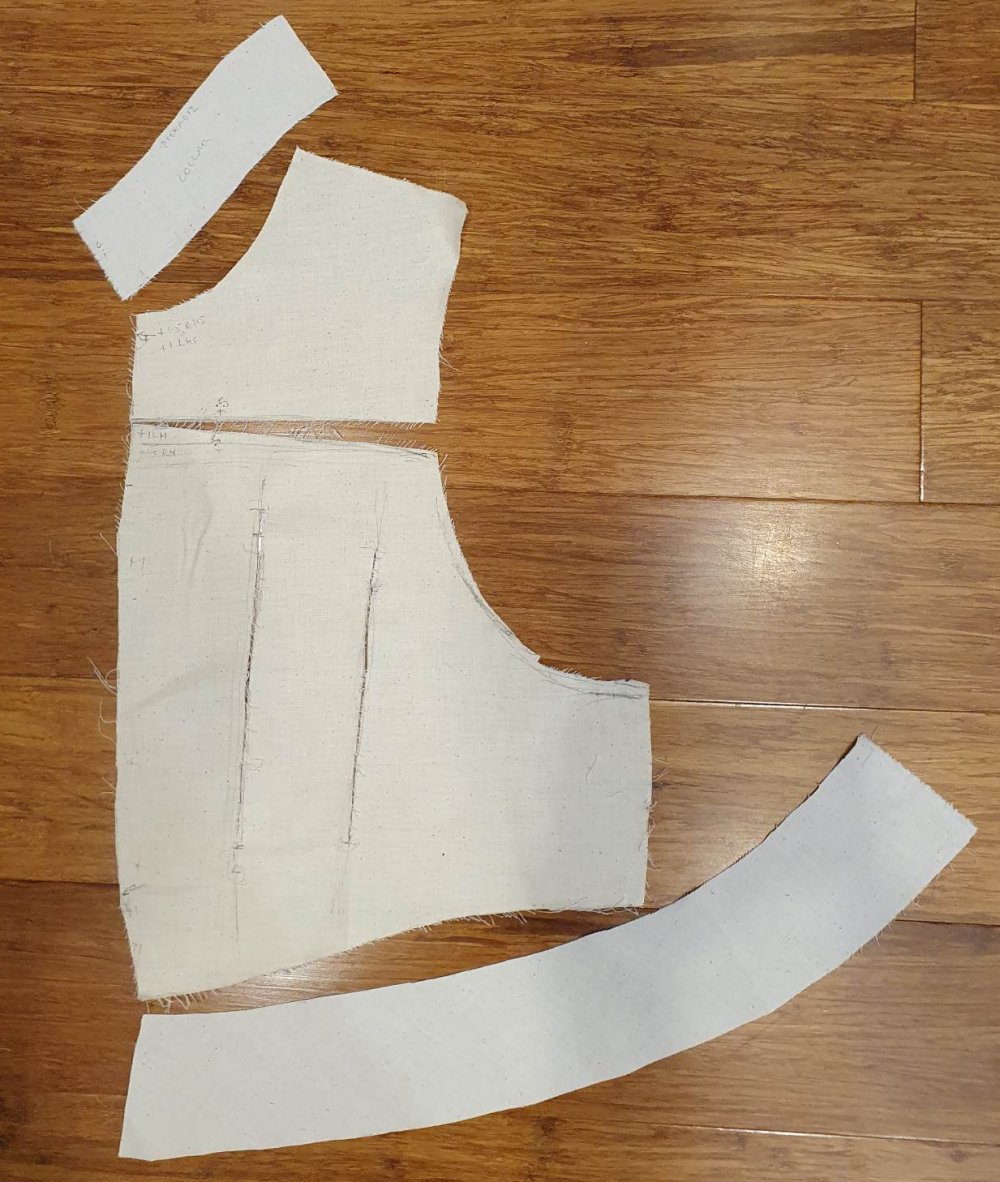

I made a fabric toile to test the fit and I took the pattern pieces with me to the tannery to select the skin. The black deerskin was ideal for the job, and was able to get all pieces from the one beautifully supple skin.
The yoke of Sir Henry’s jerkin has slanting rows of slashes betweens scored lines and fine punches, which I adapted for this jerkin. I was able to buy the perfect punch – a slight S shape, and added detail with a very fine round punch. I transferred the design lines with pattern transfer paper and a prickwheel before punching. This took longer than expected – there are over 5,000 holes.



I made a mistake in the punching pattern on the back yoke (reversed the pattern), so I had to go back to the tannery to find a matching skin. Luckily they had another one…
With the punching complete, it was time to assemble the jerkin. The finishing technique is closely modelled on the extant jerkin, with strips of scored leather used as piping. It took some experiments to find the right tool to score the leather without cutting it, but my stitch groover (for laying stitches in heavy leather) worked well.
I sewed the main seams by machine using a leather needle, then hammered the seams to flatten them, as seen in Arnold’s illustrations.
I turned all the hems by hand, using fine waxed linen thread, for maximum strength. This was the garment that taught me to use a thimble! I bound the front edge with a strip of leather and sewed it to the back, as seen on the extant jerking. The buttonholes have a punched hole at the outer edge, to reduce tear.


The buttons on the youth’s jerkin are set by pushing the shank loops through small punched holes and running a leather lace through the loops behind, securing at both ends. I used some replica pewter buttons and found the technique worked beautifully – simple, quick and strong.
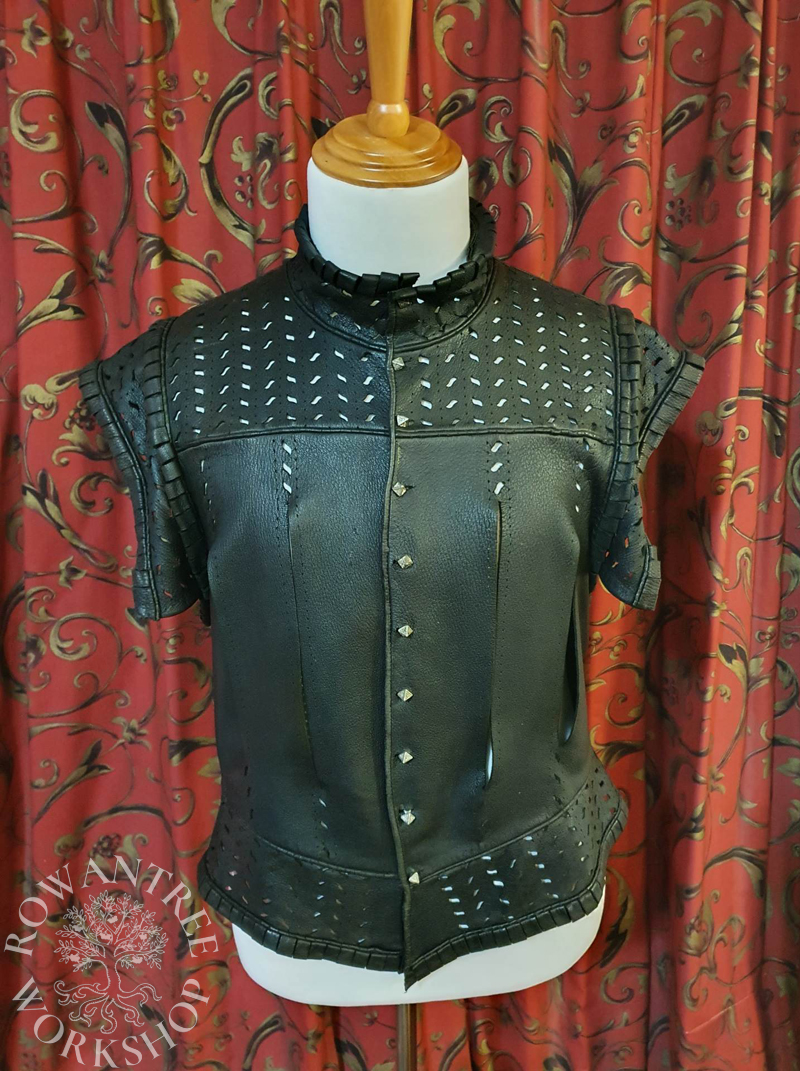
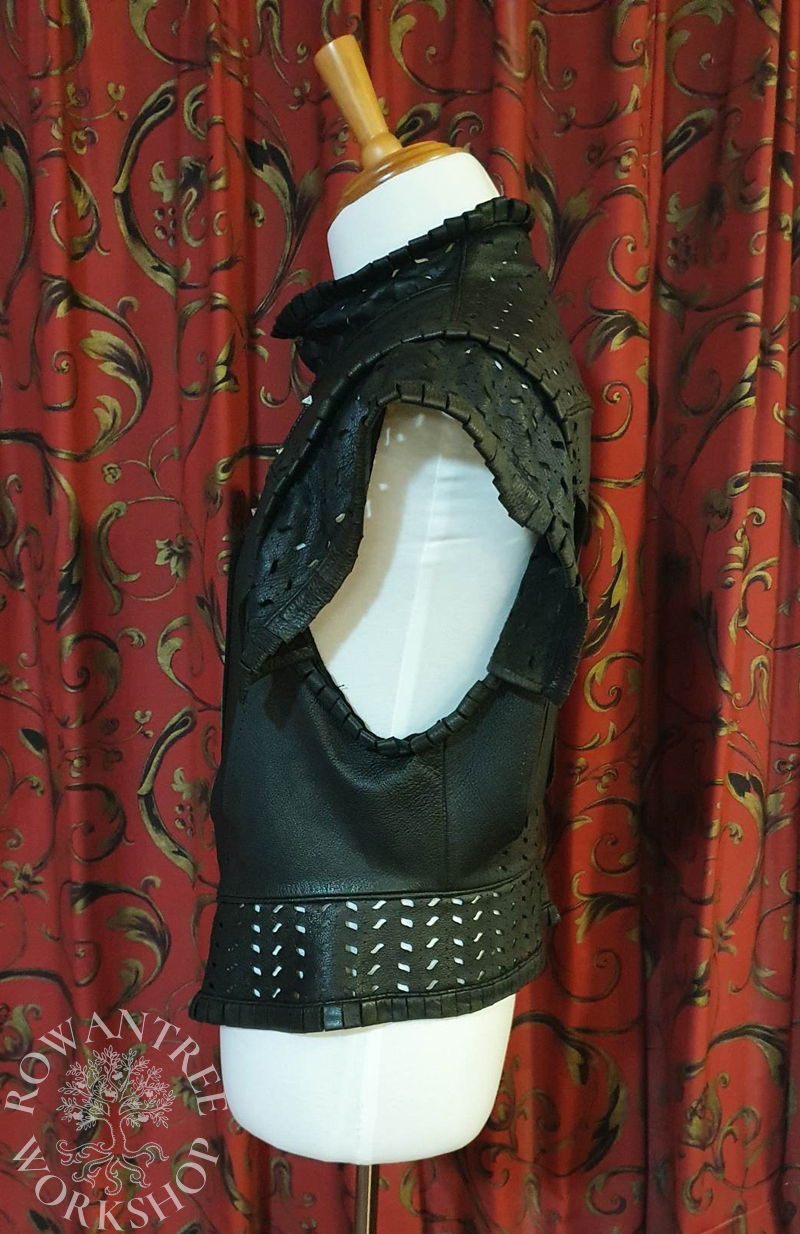
The jerkin was a considerable amount of work, but I enjoyed making it and explored some new techniques in the process.
I was well pleased with the end result, and it quickly become Nico’s favourite garment.


